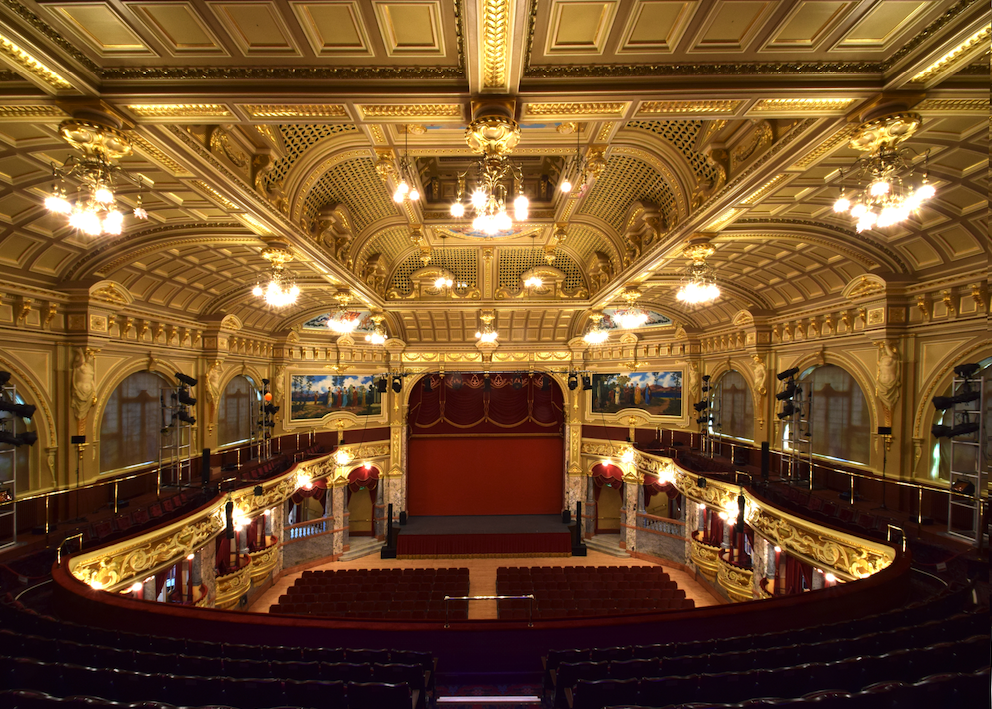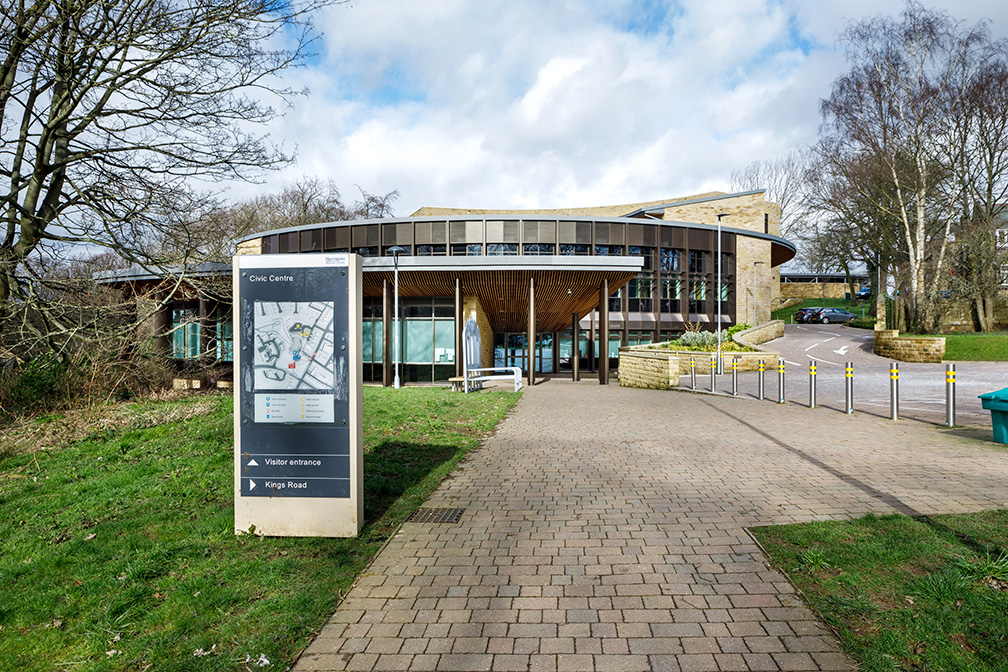With Harrogate Borough Council in its final days, the Local Democracy Reporting Service looked at five major moments that defined it.
From controversy over the Harrogate conference centre to the move from Crescent Gardens to the Civic Centre — the council has played a major role in the look, feel and development of the district for the last 49 years.
As well as searching the archives of the Harrogate Advertiser we spoke to some of the people who were involved at the time to give a picture of how these five events unfolded.
1992: The future of shopping comes to Harrogate
Speak to a Harrogate resident over the age of around 40 it’s likely they will talk with fondness about the town’s former indoor market that was demolished in 1991.
For some, shopping has never quite been the same since the council approved the demolition so it could be replaced with the £50m Victoria Shopping Centre.
The old market was well-loved and included butchers, fishmongers, florists, needlecraft shops, second-hand book and record shops and much more.
But the late 20th century was the era of the shopping mall and there were hopes in Harrogate that a more modern facility would revitalise the town centre and attract major national brands. The market traders would be invited to take the space downstairs as part of the project.
Funding came from National Provident Institution and it was developed in partnership between Harrogate Borough Council and Speyhawk Retail plc.
The plans included a council-owned 800-space multi-storey car park on the other side of the train tracks with a bridge to connect shoppers.
Read more:
- Explained: What happens to Harrogate taxis after devolution?
- What will be the legacy of Harrogate Borough Council?
But the scheme was developed during the recession of the early 1990s that hit the town hard.
Harrogate’s bus station had been boarded up due to financial difficulties and the letters pages of the Harrogate Advertiser was full of fears about the town becoming a wasteland of empty shops and buildings.
During construction, market traders were moved to a temporary market on Station Parade while they eagerly awaited their new home to open.
Excitement was building and in early 1992 the Harrogate Chamber of Trade and Commerce suggested good times were finally around the corner. It called on the Harrogate public to be more positive.
The business group had a punchy statement published in the Advertiser. It said:
“We’ve had enough! We’re sick and tired of the Harrogate and district moaners. All they do is complain, complain, complain and never look for the encouraging signs all around us.”
The Victoria Shopping Centre was designed by architects Cullearn & Phillips and was inspired by Palladio’s Basilica in Vicenza.
But its most controversial aspect were the sculptures depicting customers and staff on the balustrade around the roof line.
Harrogate historian Malcolm Neesam desribed the statues as “quite hateful” resident Simon Townson told a reporter they were “grotesque and not for Harrogate” and the Harrogate Civic Society led calls to see them removed.
However they are still there to this day after the developer insisted they were a fundamental part of the design.
In the summer of 1992, Speyhawk revealed that 40% of the units had been filled by brands including Tie Rack, Levi’s and the Body Shop.
The underground market hall was opened on October 20 by then-mayor of Harrogate Barbara Hillier, with the rest of the shopping centre opening on November 9.
There was a wave of optimism from shoppers who described the town’s new venue as the future of shopping.
There were 54 units for market traders on the ground floor and they were quickly occupied. Butcher Brian Noon told the Advertiser in 1992:
“I think its brilliant! The developers have thrown a lot of money at it to make sure the building is tip-top.”
Harrogate Wools owner Bill Lee was similarly optimistic about the building’s future. He said:
“It will bring people back to Harrogate because they definitely have not been coming. I haven’t heard one complaint.”
The Victoria Shopping Centre was built in the years just before internet shopping took hold, which was perhaps not to have been foreseen.
Enthusiasm slowly ebbed away during the 1990s and 2000s as the market traders on the ground floor left one-by-one.
Today, the Victoria Shopping Centre still features big high-street names like WHSmith, TK Maxx and HMV. The town’s post office also moved there in 2019.
It’s now owned but not run by Harrogate Borough Council. The Local Democracy Reporting Service revealed last year its value has fallen by more than 80% in 10 years.
Harrogate Borough Council said it could receive a boost in shoppers if another controversial scheme, the Station Gateway, goes ahead.
But that will be a decision for North Yorkshire Council.
2008: A dilapidated Royal Hall brought back to former glory
The Royal Hall’s halcyon days saw it host the likes of the Beatles as well as the music, arts and comedy stars of the time.
But by the turn of the twentieth century, Harrogate’s grandest council-owned building had fallen into rack and ruin. In 2002 it closed to the public after part of its famous ceiling collapsed.
It’s downfall was in part, due to the town’s conference centre being such a drain on the council’s resources, according to the book Kursal – a History of Harrogate’s Royal Hall.

Royal Hall by Jim Counter
It was in such a poor state of repair that the unthinkable was being broached by councillors — after almost 100 years the Royal Hall could be condemned and demolished.
Refurbishment was originally estimated to cost £8.56m with the council likely to having to stump up £2m from its own coffers. The remaining amount would come from a Heritage Lottery Fund grant.
However, there were fears the risky project could potentially bankrupt the authority.
Its emotional importance to the town was not only felt by residents in the town but by performers too.
David Hirst, who led the world famous brass band the Brighouse and Rastrick Band, made his plea from the stage of the Royal Hall in 2000.
He urged the audience, reduced in capacity because the theatre’s upper circle has been closed due to the crumbling concrete, to “get those letters in” to the council and back restoration. He said:
“This building is part of the Harrogate heritage, part of the tone of Harrogate.”
The Royal Hall Restoration Trust was formed in 2001 after then-leader of the council, Cllr Geoff Webber, suggested to the chairman of Harrogate Civic Society, Lilian Mina, that the council would welcome the support of an independent organisation whose prime role would be raising money for the refurbishment.
Then followed tea dances, school concerts, charity balls and other events, which raised £2.7m for the restoration — far more than the £1m it originally expected.
Lilian Mina died in 2008 and Geoff Webber died in 2021 but his son Matthew Webber, who is currently a Liberal Democrat Harrogate councillor, paid tribute to those who spearheaded the campaign to save the Royal Hall.
It was officially re-opened by patron of the trust Prince Charles in 2008 after six years of works.
Cllr Webber said:
“I am very proud of the work done by my late father as council leader at the time in conjunction with the Lilian Mina and the Royal Hall Preservation Trust that led to the Royal Hall being returned to its continued use today.”
2017: Goodbye to Crescent Gardens and a new home
Like the conference centre throughout the 1980s, it was Harrogate Borough Council’s move away from Crescent Gardens that dominated council-business during the mid-2010s.
Crescent Gardens had been used by HBC since 1974 and before that was used by the predecessor council in Harrogate ever since it opened on Halloween 1931.
But by the 21st century, the neo-classical building was showing its age and had become expensive to maintain for the council.
In 2010, the Conservative and Liberal Democrat coalition government came to power and councils were ordered to find savings under its programme of austerity.

The civic centre at Knapping Mount.
For the council, Crescent Gardens was an obvious place to look.
The council put forward several proposals, which included refurbishing Crescent Gardens, but it ultimately decided to build new offices on land it already owned at Knapping Mount off King’s Road.
At the time, it said the build would cost £8m although the move, as well as the selling off of other offices, would save around £1m in year due to reduced costs involved with maintaining the older buildings.
Tantalisingly for the council, there were hopes it could sell Crescent Gardens to a luxury developer.
Then-council leader Don Mackenzie was quoted saying it could generate an investment of up to £30m into the district’s economy.
Read more:
- Explained: Who will make planning decisions in Harrogate district after devolution?
- Explained: What happens to bin collections in Harrogate after devolution?
Another former Conservative council leader, Anthony Alton, told a meeting the move was probably the biggest decision the council has taken since 1974. He added:
“We are in a continuing economic downturn which means that we have to make every penny count.”
The move to the Civic Centre was always contentious.
The Liberal Democrats argued that £2.5m should be spent on a refurbishment of Crescent Gardens and the Knapping Mount site should be sold for affordable housing.
They also criticised its circular design, saying it would increase costs.
By 2015, rumblings of another local government reorganisation in North Yorkshire were beginning to gather pace and questions were being asked about what would happen to the Civic Centre if there was no longer a council in Harrogate.
Vicky Carr is a former reporter at the Harrogate Advertiser and current deputy editor at the Stray Ferret.
She remembers the subject coming up at a heated Harrogate Chamber of Trade and Commerce meeting that year.
She said:
“Someone wondered whether it made sense to be spending millions on a new headquarters for a local authority which, under government policy, was likely to be abolished within a decade.
“HBC offered reassurances that, should devolution go ahead, a shiny new civic centre would make Harrogate an ideal place for a new unitary authority to have its headquarters.
“Fast forward eight years and, while North Yorkshire Council will use the civic centre for some staff and services, it is keeping its headquarters firmly rooted in Northallerton.”
In 2020, the Stray Ferret published an investigation that estimated the land at Knapping Mount was worth £4.5m to the council, taking the project’s overall cost to £17m. However, the council has always disputed this.
Apart from during the covid lockdowns, council staff have been using the Civic Centre since December 2017.
Crescent Gardens on the other hand is still empty, almost five years’ since Harrogate Borough Council moved out.
The council originally announced it would sell it to property developer Adam Thorpe who had plans for a £75m redevelopment including luxury apartments, an art gallery, underground car park, swimming pool and restaurant.
But two years later, Mr Thorpe’s company ATP Ltd fell into administration with debts of almost £11m, including £24,394 owed to the council.
Crescent Gardens then went back up for sale and was eventually bought for £4m by Impala Estates in 2020.
The Harrogate-based developer was granted planning permission last year for a major refurbishment of the building that will see two-storey extension, rooftop restaurant, gym and new office space.








